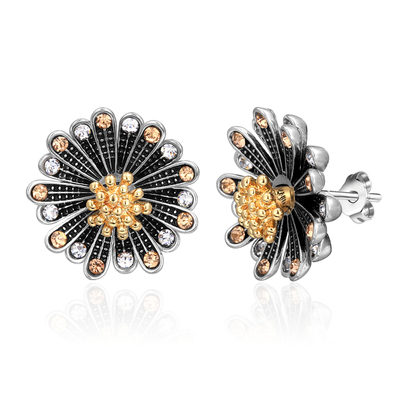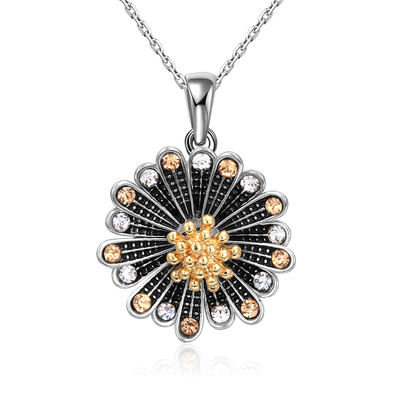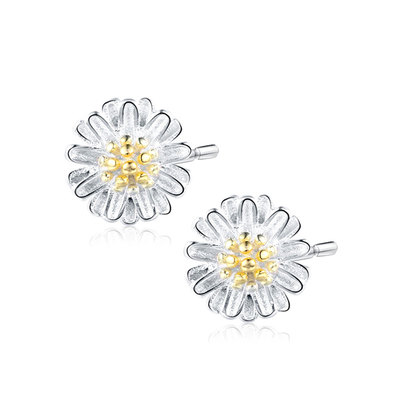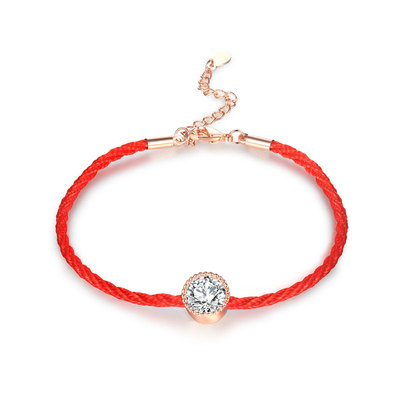I bet you made all sorts of mistakes in jewelry, I wish you hadn't. This may be a lack of time or bad habits, but it's more likely that you don't have enough information to realize what the problem might be.
So I'm here to help you out by listing my top 12 jewellery mistakes and how to avoid making them - for your own sake.
1. WEARING THE SAME JEWELLERY EVERY DAY
Even I know how easy it is to slip into the habit of wearing the same pieces day in, day out - and almost never taking them off. But it's a good habit to break for a couple of reasons.
Firstly, your everyday jewellery will get grimy in places you can't see or in ways that you don't necessarily notice because the changes take place slowly. That's especially the case for earrings with part of the pieces hidden behind your ear lobe and potentially leading to infections.
You should take your everyday pieces off regularly to give them a good clean with some warm soapy water and a soft bristled brush. I recommend doing this every 1-2 weeks.
Secondly, you'll be boring and nobody wants that! So have a think about the jewellery you have in your collection and how you can use more of it on a regular basis.
If you don't have much jewellery or your collection has some gaps in it, then come up with a plan to add more pieces over time (including dropping big hints to loved ones at the right times of year!).
2. NOT KNOWING THE MATERIALS USED TO MAKE JEWELLERY
When shopping online or offline for jewellery you should always be clear on what the pieces are made from. If the seller doesn't specify the materials then it's likely the designs are not made from sterling silver, gold or other precious metals. If you're unclear, then you should always ask before you buy.
In particular if a piece gives the appearance of being gold but is inexpensive, then it's almost certainly not gold at all - or at best it will be very thinly plated. Gold is a very expensive metal and there is no such thing as cheap gold jewellery.
Non-precious metal jewellery is unlikely to wear well over time and may turn your skin black or green. It may even cause allergic reactions or worse. Thinly plated jewellery may fairly quickly wear through to the metal beneath.
You should also know what any gemstones are: whether they are manmade or natural - or whether they are entirely fake. Any of these options are fine in the right circumstances, but it pays to be aware of what you're buying.
Of course low cost costume type jewellery has its place and if you're happy for a design to be a relatively short lived fashion piece and your skin will tolerate the materials, then that's perfectly okay.
Just keep in mind: knowledge is power. Read our handy articles to get the lowdown on gold and silver so you better understand what the deal is with these metals and why they're so valuable and useful in jewellery.
3. NOT BEING CREATIVE WITH JEWELLERY AND ACCESSORIES
Related to point 2: don't be boring!
When seasons change is a great time to do some experimenting in front of a mirror with different outfits and accessories (including jewellery of course). Be as creative as you can with combinations and make notes of what works for you so you'll remember to mix it up a bit as you're getting dressed for work or different occasions.
Also make note of any types of pieces you wish you had to extend your wardrobe further. Making the right investment in jewellery and accessories can add a great deal of creativity to your wardrobe for years to come.
You should check out our 15 Jewellery Style Tips for more advice on making the most of your jewellery collection while not losing yourself in the process.
4. NOT CLEANING YOUR JEWELLERY
This is a big one. So many people fail to clean their jewellery regularly, if at all. It can be easy to miss the build up of general grime and tarnish, but - believe me - it will be there and it will be noticeable to others.
You wear jewellery against your skin and clothing for extended periods while undertaking all sorts of activities, so of course it will need cleaning from time to time, just as your clothing does.
I recommend scheduling a thorough clean of your jewellery at least twice a year (or more often depending on how you wear and store your pieces). The transition into warmer and cooler months of the year is a great time to do it. This can involve anything from a quick wash with a gentle soap through to more complex tarnish and grime removal, depending on the pieces.
It pays to educate yourself about how to clean your jewellery safely and correctly, so check out our 10 quick jewellery cleaning tips and also our comprehensive jewellery cleaning and care guide. And don't forget to add this as a recurring task in your diary.
5. USING DODGY JEWELLERY CLEANING METHODS
While it's better to make an effort to clean your jewellery than not to do it at all, not all cleaning methods are created equal and some may permanently damage your precious pieces.
Cleaning your precious metal jewellery with toothpaste is really not a good idea. It's abrasive and it will deplete the metal over time, making any heirloom pieces less and less valuable. It may also terminally damage finishes. Same goes for using baking soda which is rubbed against the metal to clean it: just don't do it.
Using any form of alcohol with gemstones is likely to also be a bad idea. In fact my top tip is to use alcohol for drinking purposes only! This is especially important for more porous gems like pearls, opals, turquoise and lapis lazuli.
I recommend that you avoid harsh chemicals altogether, unless those chemicals are specifically recommended by professionals for cleaning the type of jewellery you have. Read the care and cleaning articles linked to in point 4 for advice.
6. WEARING YOUR JEWELLERY WHILE SWIMMING OR SHOWERING
There a few reasons to avoid wearing your jewellery in water.
Firstly, it can be easy to lose your pieces - especially when showering. If the idea of your precious ring slipping off and going down the drain before you can save it terrifies you, then it's not a good idea to take the risk.
Also you'll find that your earrings, necklaces and gemstone rings are likely to get gummed up by the residue from shampoos, conditioners and soaps over time. If you do keep some pieces on when you shower or bathe, then make sure you take them off occasionally to give them a good clean as per point 2 above: earrings especially.
Finally, if you're going for a swim, I recommend you leave your jewels safely at home.
Swimming in pools or the sea while wearing precious metal jewellery is never recommended. Chlorine used in pools or jacuzzis can discolour silver and many gemstones - and it can even potentially weaken gold. As for salt water, it can dull even diamonds and erode soldered parts in metal jewellery.
7. NOT STORING YOUR JEWELLERY APPROPRIATELY
Avoid storing your jewellery in a place where humidity is an issue, especially bathrooms. Sterling silver jewellery in particular will tarnish faster in humid places.
You should also store your precious jewellery away from free flowing air. In part it will simply get dusty and grimy, but sterling silver and other metals will tarnish a lot faster when left unworn in the open air.
Also be aware that metal jewellery which gets jumbled up and can easily rub against other pieces will get damaged. You want to avoid scratching and scuffing silver and gold especially, but also softer gemstones.
I recommend storing your jewellery in a dedicated jewellery box, jewellery roll or even keep each piece (or pair) in its own small padded box. This will limit the exposure to flowing air and humidity. Depending on your storage set up it can also help to prevent scratching and tangling.
If you prefer to display your jewellery on a necklace tree or similar, then be prepared to clean it much more regularly - and don't forget to dust it too!
8. NOT CLASPING NECKLACES AFTER TAKING THEM OFF
Related to 7: you should always clasp your necklaces when you take them off. This will help to avoid tangled chains which can be very difficult to pull apart. As a jeweller, I spend a lot of time untangling lengths of chain and it's not a lot of fun.
If you're still having trouble with tangles, then look at using straws or other tubing to help you out. You can put one end of the necklace through the straw before clasping it, which will make tangles pretty much impossible for most necklaces.
9. NOT CONSIDERING THE ETHICS BEHIND THE JEWELLERY YOU BUY
This tip is one I'm especially passionate about as jewellery can be a bit of an ethical minefield.
Here are some issues I recommend you consider when shopping:
Does the jewellery business use recycled precious metals where possible? Does it recycle its own metals?
Are gemstones ethically sourced - especially diamonds and other high value stones, which may come from war zones?
Are lab grown or simulated gemstones used (these are generally more ethical and sustainable than mined stones while still being high quality)?
Does the seller make their own pieces by hand? If not, where are they made and are working conditions safe and ethical?
Is the seller up front about the type of materials used in their designs?
Are the prices appropriate? Too cheap means almost certainly means that someone is being ripped off somewhere along the line (and it could even be you!). Check out our article on how to truly support independent designers and why it's great to shop small, shop local and shop handmade.
10. BUYING JEWELLERY FROM CHEAP RETAIL CHAIN STORES
I'm not naming any names, but you know the types of shops I'm talking about: they're the big jewellery chain stores you see in many shopping malls and online - and they promise a world of sparkles for not a lot of money.
Sometimes their pieces are sourced from people working in very poor conditions and often the workmanship can be very shoddy - to the point of jewellery not being repairable if and when something goes wrong.
If you're looking for high end 'traditional' jewellery, then find a smaller scale manufacturing jeweller with a good reputation.
If you're looking for more contemporary, artisan style jewellery then find independent designers you like and patronise them as much as you can.
These approaches to shopping for jewellery will result in a much better investment for you. You'll also benefit from the feel good factor by shopping from businesses that you can truly feel comfortable supporting and helping to flourish.
11. NOT CHOOSING A NECKLACE TO MATCH YOUR NECKLINE
Instead of always throwing on your favourite necklace or pendant with almost every outfit, have a think about the different types and lengths of necklace that will go well with different types of necklines. You'll find it will add a lot more interest and style to your wardrobe.
It's a good idea to have an array of necklace lengths available in your jewellery collection. You should also pick up necklace extenders so you can easily vary the lengths of the necklaces and pendants you love to wear.
12. FAILING TO DETERMINE YOUR RING SIZE BEFORE SHOPPING
Not determining your ring size correctly will only lead to frustration, delays and possibly additional costs when you buy rings: it's best avoided. Take the time to get your ring size right before shopping and to understand what the issues are.
Check out our ring size guide. The most important tip of all is to invest in a ring sizer before you purchase - or even visit a jeweller in person to get an accurate size.




没有评论:
发表评论